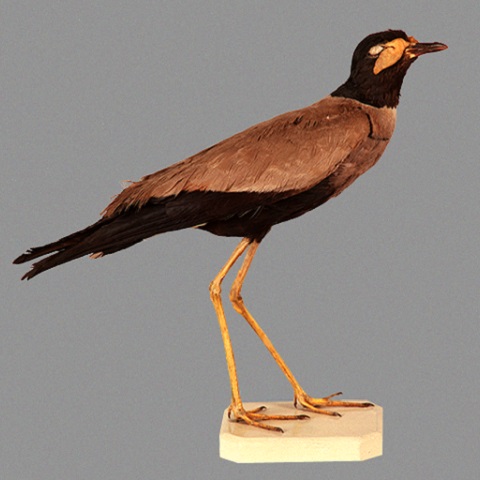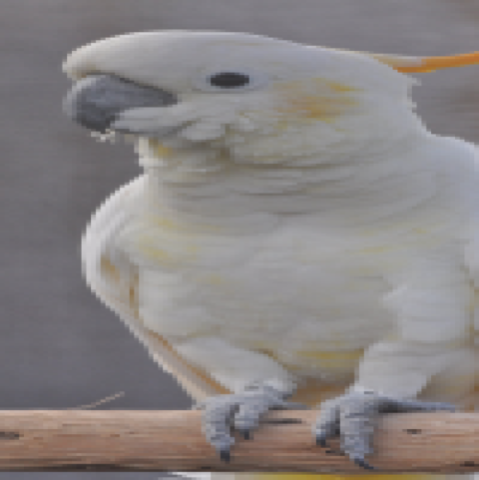Conservation Actions
Conservation Actions UnderwayRecent provisional observations have been made in two protected areas, the Berbak Game Reserve and Padang-Sugihan Wildlife Reserve, both in South Sumatra. Further searches for the species are planned (M. Iqbal in litt. 2012).
Conservation Actions Proposed
Conduct surveys on islands within its historical range (and mangroves and swamp-forest of South Sumatra province [Iqbal 2010]) to clarify its current distribution, population status, movements and attendant threats. Priority islands to search include Jemaja and Natuna islands, small islands off South Bangka Island (M. Iqbal in litt. 2012, D. L. Yong in litt. 2012) and remote islands of Riau/Lingga island group (D. L. Yong in litt. 2016). Formulate a conservation strategy involving protection of key islands, especially those supporting breeding populations. Study fruiting tree phenology where the species has been recorded or is suspected to be extant to improve knowledge of food availability and the species's feeding ecology (Lee et al. 2009). Initiate conservation measures on Simeulue to counter the potential threats of hunting pressure and the loss and degradation of suitable habitat (Eaton 2011).
Location Information
Columba argentina appears to have a highly restricted range, with historical records suggesting that it at least formerly occurred on islands off Sumatra, Indonesia (e.g. Simeulue, Mentawi Islands, Riau and Lingga archipelagos), and off the west coast of Sarawak, Malaysia and Kalimantan, Indonesia (e.g the Karimata and Natuna Islands, including Burong). There is one confirmed historical record each from mainland Sumatra and Kalimantan. There were previously no confirmed reports since 1931, and reports from South Sumatra province and Pulau Talang Besar in the Talang Talang Islands in 2001 were treated as provisional (Wilson 2004). However, in 2008 one individual was photographed between the islets of Masokut Island and Simaimu Islands, off the southern tip of Siberut in the Mentawai Islands, Indonesia, confirming that the species survives in the wild (Lee et al. 2009). This record was followed by at least one other sighting on Siberut of two birds that were possibly this species, in January 2009 (Verbelen 2010).Unequivocal evidence that the species persists on Simeulue came in the form of at least three birds photographed in late December 2010 (J. Eaton in litt. 2010, Eaton 2011, Eaton and Rossouw 2011). There is also a photograph of two captive individuals in Hong Kong, and pictures of a small flock of birds, potentially C. argentina, from the Sembilang National Park in 2008 (Anon. 2009, M. Iqbal in litt. 2009, Iqbal 2010). Interviews with 20 local people near the Merang-Kepayang River (South Sumatra), in August 2009, produced one possible record (Iqbal 2010). There is also a report of a single bird in peatswamp forest at Berbak National Park (Jambi province, Sumatra) from February 2011 (M. Iqbal in litt. 2012). A further three individuals were observed (but no photographs obtained) on Bojo islet, Batu islands (off the west coast of Sumatra between Nias and Siberut) in January 2011 (Eaton and Rossouw 2011). Sightings continue to be recorded on Simeulue (A. Banwell in litt. 2015).
Given the difficulty in distinguishing C. argentina from the sympatric Ducula bicolor, it is likely that C. argentina has been overlooked in previous surveys for the species (Lee et al. 2009). Following the documentation of key differences between the two species (Yong 2009), it is likely that further surveys will result in the discovery of remnant populations.
Geographic Range
Extant
Indonesia, Malaysia
Population Information
This newly re-discovered species is precautionarily assumed to have a tiny population (fewer than 50 individuals and mature individuals). However, given the probable misidentification of C. argentina in past surveys, and the documentation of key differences between the species and the similar sympatric Ducula bicolor, future surveys may well identify remnant populations and revise the population estimate upwards.Threats
Although little is known about the species, it may be speculated that settlement, deforestation, disturbance, hunting on small islands and the introduction of mammalian predators have caused widespread declines, as is the case for a number of other declining columbiformes. The birds photographed on Simeulue Island in December 2010 were found to be tame, prompting concerns that they could be easy targets for the island's hunters, although it was noted that other pigeon species were abundant (J. Eaton in litt. 2010, Eaton 2011). Poaching to supply the pet trade may be a further threat, as exemplified by two captive birds in Hong Kong (Lee et al. 2009, Eaton et al. 2015). Habitat loss is likely to be a major threat, with extensive clearance for logging and conversion to agriculture and plantations taking place throughout the species's range (Lee et al. 2009, Iqbal 2010). The locality of the recent records on Simeulue is being mined for gravel (J. Eaton in litt. 2010, Eaton 2011), which could result in the loss of suitable habitat (J. Eaton in litt. 2010). Further mining is planned on Simeulue, as are large-scale oil palm plantations (Eaton 2011), which could result in extensive habitat loss, although the island currently remains heavily forested (Eaton and Rossouw 2011). The Batu islands remained extensively forested with minimal clearance in 2011 (Eaton and Rossouw 2011).Partners
IUCN Red List Account Link
Please click here to see the species' IUCN Red List Account page.Photo Credits
Gwee Chyi Yin







